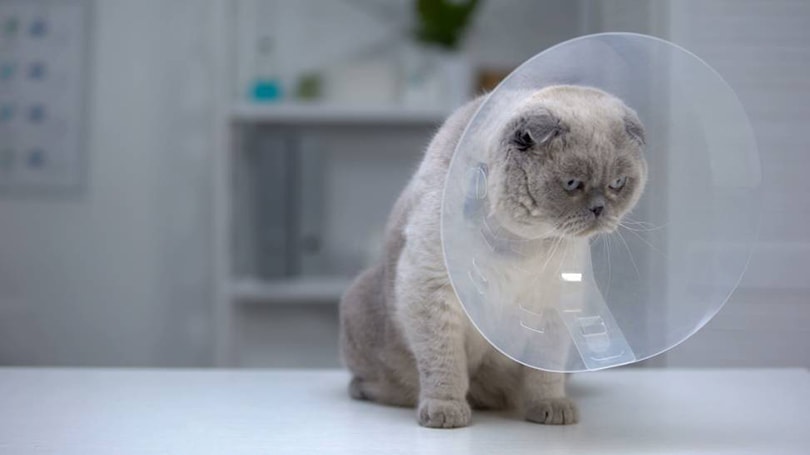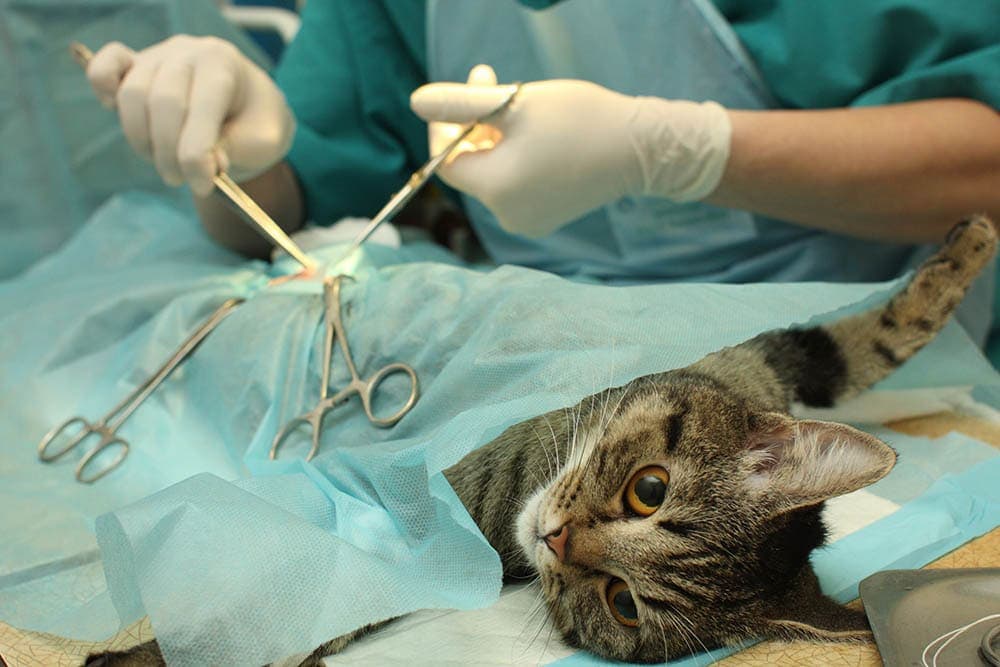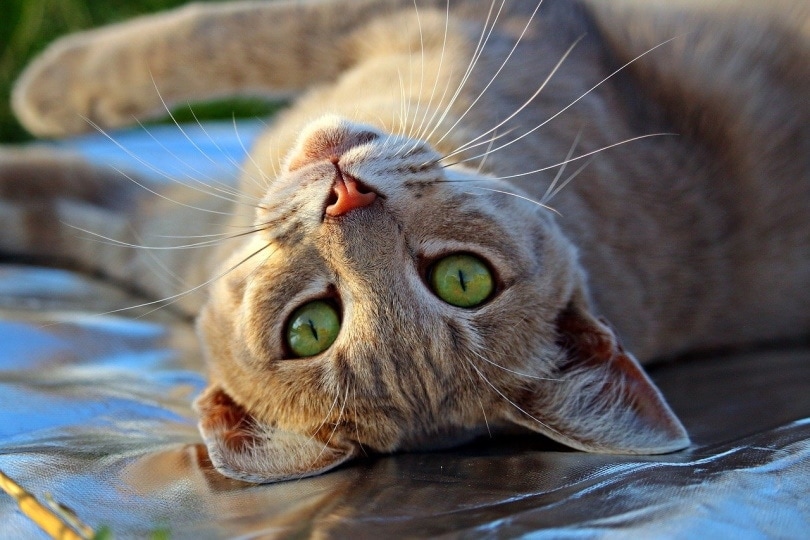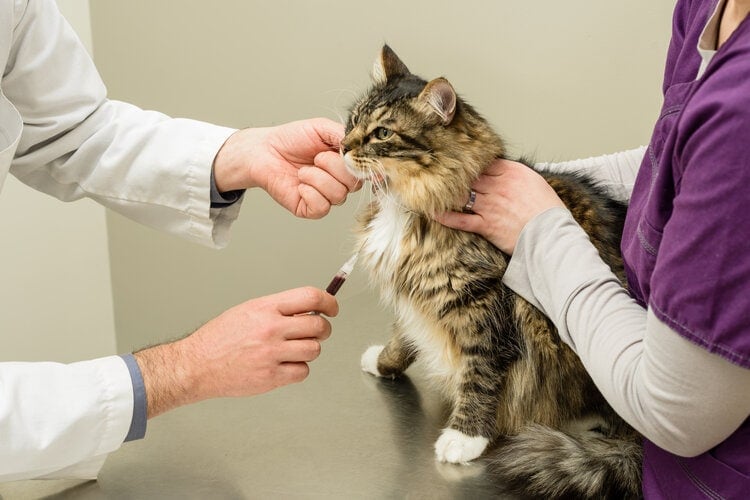Do Cats Have Periods After Being Spayed? What You Need to Know!
By Ashley Bates
Updated on

We’ve all encountered a cat in heat, mainly because they aren’t quiet about it. Females in heat are highly vocal and exhibit a distinct set of behaviors. If you share your home with a female cat over 6 months of age, you probably know this all too well.
Usually, opting for a spay surgery is a surefire way to end these cycles permanently. But can cats still have these cycles even after they are fixed? Surprisingly, yes, there is always an underlying cause, and it’s usually vet-worthy.
What Exactly Happens During a Cat’s “Period”?

When female cats reach sexual maturity, typically around the 6-month mark, they enter their first heat cycle. Unlike humans and some other mammals, it’s very uncommon for a cat to bleed during this time.
Increase in Affectionate Behavior
When female cats enter a period called estrus, their behavior changes. They usually become overly affectionate—sometimes too affectionate and even demanding. You might observe them rubbing on the carpet, furniture, and even you.
Spraying or Urinating Outside of the Litter Box
Females in heat are usually highly vocal. Like their male counterparts, they can emit spray, which contains pheromones to attract potential suitors. So yes, some females, like males, can also spray, posing an even bigger issue.
Increased Vocalization
Meowing for days—that’s what you’re going to hear. Cats in heat can keep you up all hours of the night and bother you during the day with their constant cries for attention.
A Change in Bodily Behaviors
You might notice your female rubbing themselves on literally everything. They go from being mild-tempered and relaxed to acting nervous, frantic, and moody. They might put their hind end in the air or rub their undercarriage on the carpet—all is normal and expected.
Excessively Grooming
Your female might clean herself more than usual. You may observe her licking obsessively, even.
Trying to Escape Outside
In searching for a mate, your little lady might bolt for the door every time they get the chance. They are going to try really hard to answer the call of the wild, so you must have a cat in heat always contained to avoid unwanted pregnancy.
Spaying Your Cat: What Changes?

When your cat is spayed, the veterinarian will remove her ovaries and uterus to stop heat cycles. The vet and technicians perform a surgery to remove the organs which, in turn, no longer sends signals to the body to reproduce.
When the ovaries are gone, the body no longer produces estrogen and therefore, they stop heat cycles from that point forward.
Signs of Heat After Spay
A cat exhibiting signs of heat after they have been spayed is never normal. Since spaying removes the ovaries, it eliminates the emission of hormones that trigger your cat’s cycles. If your cat keeps cycling, it’s time to call your vet without hesitation.
If you notice at any point that your cat is acting the same as an unaltered young female, it’s vital to check hormone levels and potentially have more testing to pinpoint what might be causing the behavior change.
Ovarian Remnant Syndrome

Ovarian remnant syndrome is typically to blame for heat in spayed cats. When your cat is spayed, leftover ovarian tissue might not be properly removed, which causes the body to continue producing estrogen.
Also, it can happen when a small piece of tissue breaks away from the ovary and establishes a blood supply; it will continue producing hormones. If this is the case, your cat may return to seasonal heat cycles.
However, it can be months or even years before you see signs developing with ovarian remnant syndrome. Signs and symptoms of ovarian remnant syndrome mimic regular heat in cats, which we discussed earlier in the article.
- Vaginal Cytology: A swab sampling of the vaginal area is taken during suspected heat to examine cells further microscopically.
- Baseline Hormone Level Checks: While high or abnormal hormone levels indicate ovarian remains, normal hormone levels do not rule out the possibility of it.
- Hormone Stimulation: This is the most accurate test. Synthetic stimulating hormones are administered to the cat and the progesterone is measured 7 days later to confirm or rule out the presence of ovarian tissue.
- Ultrasound: This infrequently used method might show the small bits of tissue left in the body; however, it is unreliable due to the many variants, including the size, the stage of the cycle, and the skills of the veterinarian or technician performing the test.
If you are thinking about getting yourself a cat, or you already have one, there is a really good chance you will need to get her neutered or spayed. These procedures can sometimes be pretty costly. Good pet insurance can then go a long way. Here are just a few top-rated options you can take a look at:
Top Rated Pet Insurance Companies:
Taking Your Cat to the Vet

If you notice recurring signs of heat after your cat is spayed, don’t hesitate to contact your vet. It’s a time-sensitive issue and needs to be addressed immediately. Your vet will run the proper testing so you can get to the bottom of the problem.
Usually, your vet will run bloodwork first to check your cat’s hormone levels. If there is an influx of estrogen and progesterone post-surgery, it will require further examination.
Suppose your vet verifies that your cat indeed has ovarian remnant syndrome. In that case, they will surgically remove the remaining tissue to correct the problem—truly ending heat cycles and normalizing your cat’s bodily functions.
Conclusion
So, the real answer is, no, cats do not have periods if they have had a successful spay surgery. Ovarian remnant syndrome is a rare but real condition requiring additional surgery to remove the remaining tissue.
If you suspect your spayed cat is going into heat cycles, make an appointment with your vet right away to check hormones levels. If your cat is not yet spayed, know that spaying takes care of behavioral issues associated with heat in almost all cases.
Featured Image Credit: Motortion Films, Shutterstock















